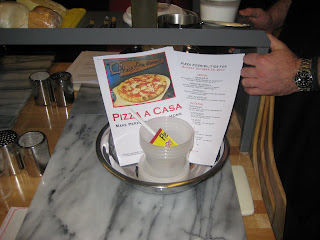I don't know about you, but 20 inches of snow in less than 20 hours made me want to stay home and make soup. Accordingly, I spent part of the "Blizzard of 2010" cooking a big pot of mulligatawny. Here's the recipe, along with an additional soup recipe, for your next snowy day.

Mulligatawny Soup
(serves 6)
1/4 cup vegetable oil
3 medium onions, chopped
5 garlic cloves, chopped
2 large carrots, peeled and chopped
1/2 tablespoons garam masala
1/2 teaspoons ground coriander
1 teaspoon turmeric
1/2 teaspoon cayenne pepper
2 bay leaves
2 cups red lentils
8 cups chicken or vegetable broth
1 cup canned light unsweetened coconut milk
juice of 1 lemon
2 cups cooked basmati rice (great use for leftovers from Indian takeout)
salt and pepper
1. Heat vegetable oil in a large pot over medium-high heat. Add onions and carrots and cook until golden brown, stirring frequently, about 15 minutes. Add garlic and saute an additional two minutes.
2. Add garam masala, coriander, turmeric, and cayenne and stir to coat vegetables. Add lentils, chicken broth, and bay leaves. Bring soup to a boil and reduce heat to medium until lentils are very tender, about 20 minutes.
3. Discard bay leaves and puree soup, with an immersion blender if you have one, otherwise, in a blender, in batches, until smooth.
4. Return soup to pot. Add coconut milk, lemon juice, and rice. Season with salt and pepper to taste.

Split Pea Soup with Ham
(serves 6)
1/2 pound smoked bone-in ham (I got this at Fairway's deli counter), shredded into bite-size pieces
4 bay leaves
1 pound split peas, rinsed and picked through
1 teaspoon fresh thyme leaves
2 tablespoons olive oil
2 medium onions, chopped
2 medium carrots, peeled and chopped
2 medium celery stalks, chopped
1 tablespoon butter
2 garlic cloves, mined
1 pinch sugar
3 small new potatoes, scrubbed clean and cut into a medium dice
salt and pepper
1. Bring three quarts of water to a boil with bay leaves. Reduce heat, add split peas and thyme, and simmer until peas are tender, but not dissolved, about 45 minutes.
2. In the meantime, heat oil in a large skillet over high heat. Add onions, carrots, and celery. Sautee, stirring frequently, until vegetables begin to brown. Reduce heat to medium-low and add garlic, butter, and sugar. Cook vegetables, stirring infrequently, until vegetables are deep brown, about 3o minutes. Set aside.
3. Remove bay leaves from simmering split peas. Add cooked vegetable mix, shredded ham, and diced potatoes. Simmer until potatoes are tender, about 20 minutes more. Season with salt and pepper.

















































